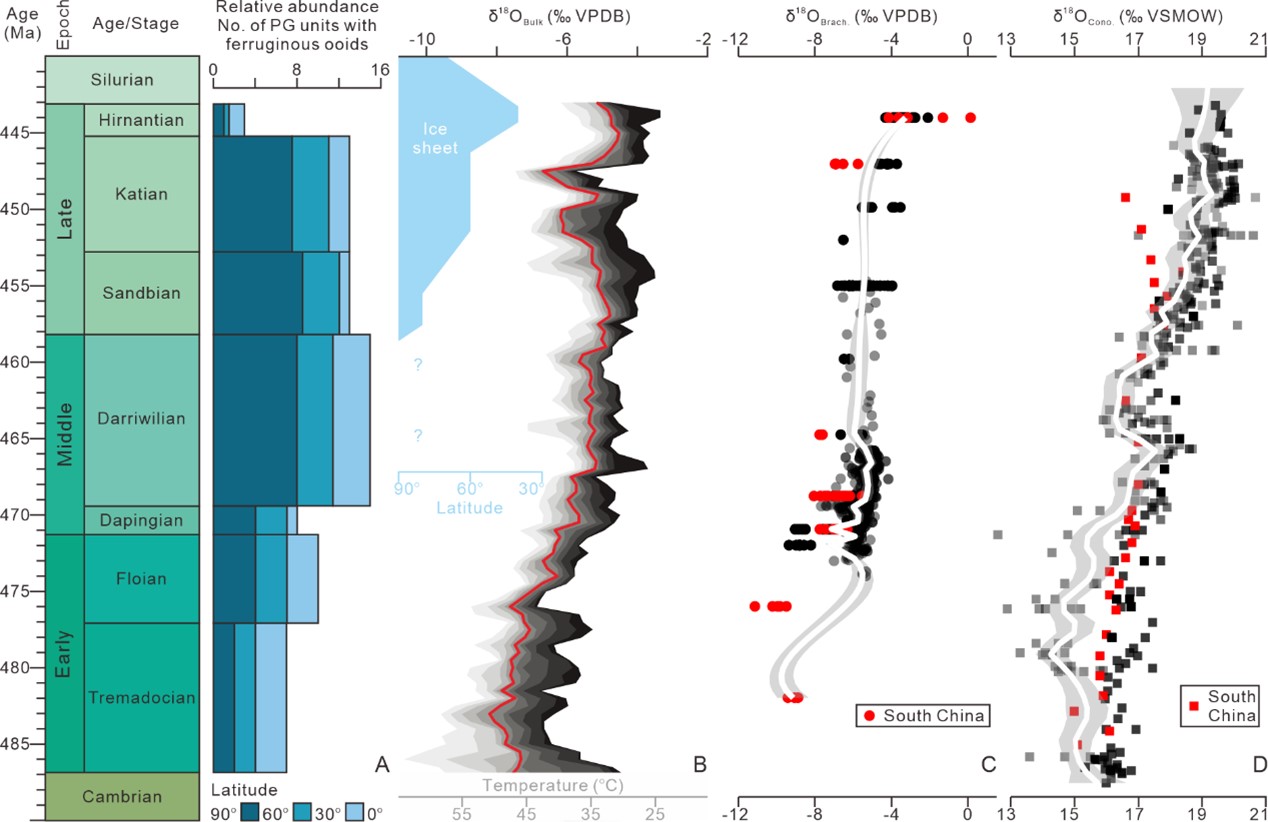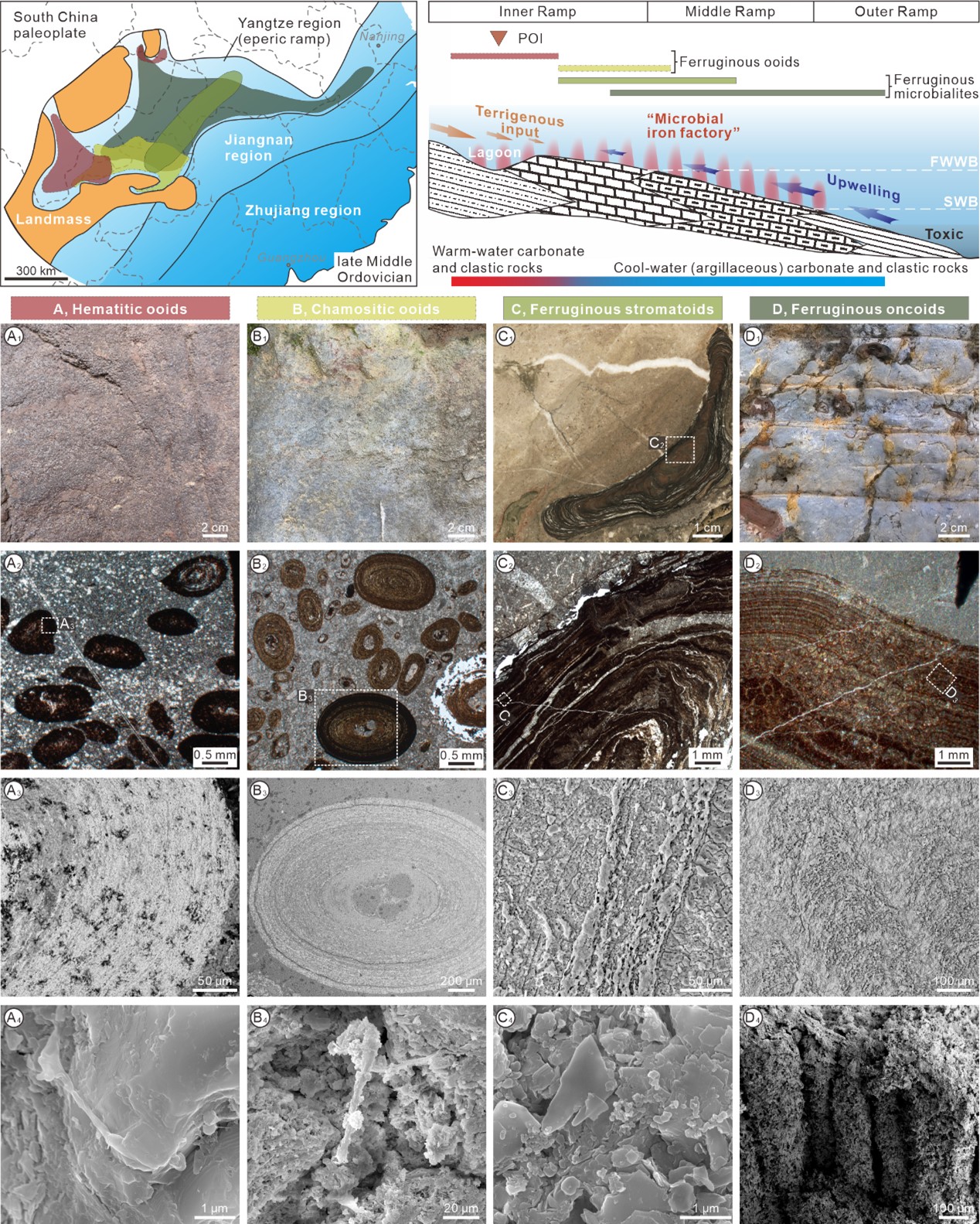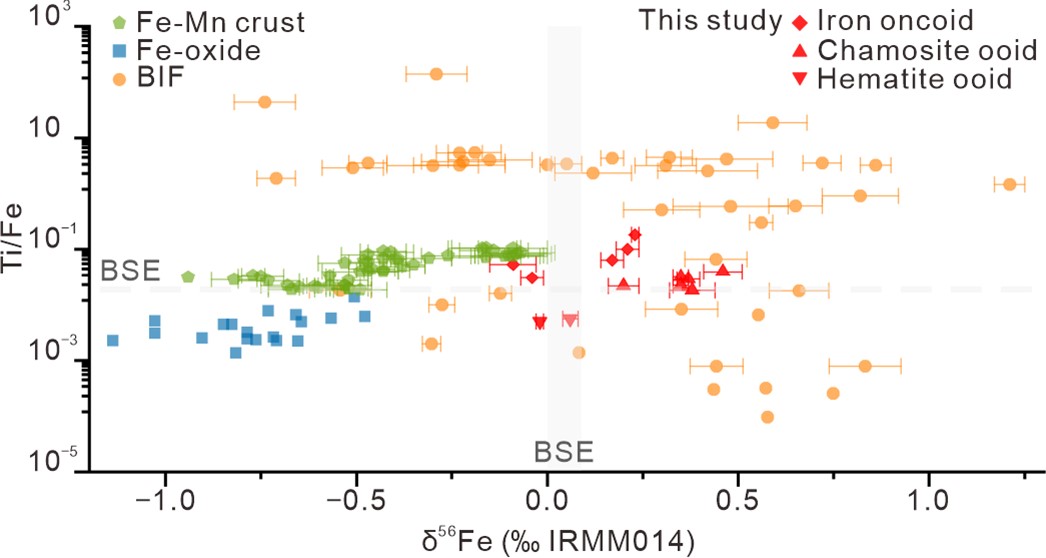
Globally, Phanerozoic ooidal ironstones (POIs) stand as major sedimentary iron deposits, drawing extensive scientific interest due to their economic value and critical role in deciphering ancient paleoenvironments and tectonic activities. Traditionally, these deposits have been closely tied to warm tropical and subtropical climatic conditions.
However, a key contradiction persists: Ordovician ooidal ironstones are widely distributed across high-paleolatitude regions of the ancient Gondwana supercontinent, including present-day Central Europe, the Mediterranean, and North Africa—where they formed in cool-water sedimentary settings and are associated with cool-water fauna. This distribution directly conflicts with the warm tropical-subtropical environments typically proposed for ooidal ironstones from other geological eras, creating a longstanding geological paradox.
To address this enigma, a research team led by scientists from the Nanjing Institute of Geology and Palaeontology of the Chinese Academy of Sciences (NIGPAS), in collaboration with Canadian researchers, has analyzed a set of Middle–Upper Ordovician ooidal ironstones from South China.
This South China deposit represents a rare warm-water, lagoonal example of Ordovician ooidal ironstone—findings built on the team's prior work. When paired with coeval, relatively cool-water ferruginous ooids and microbialites also identified in South China, the deposit offers a unique window to comprehensively and multidisciplinarily investigate the environmental significance of Ordovician ferruginous deposits, particularly along gradients of water temperature and sedimentary conditions.
The study, recently published in the international journal Geology, uncovered two critical patterns: a global overlap between the distribution of ooidal ironstones and upwelling zones, and a temporary correlation between the abundance of these ironstones and positive global oxygen isotope excursions.
These patterns suggest that the peak occurrence of ooidal ironstones during the Darriwilian (late Middle Ordovician) likely marks a pivotal climate transition—from the greenhouse conditions that characterized earlier Ordovician periods to the icehouse conditions that followed.
To explain this phenomenon, the team proposed a new mechanism: Ooidal ironstone formation was not directly controlled by water temperature, as previously thought, but instead linked to two key factors—microbial activity and upwelling driven by frequent cool-water incursions from Gondwana.
According to the model, active upwelling transported iron-rich (ferruginous) waters from deep, oxygen-poor (anoxic) ocean layers to the surface. There, microbial activity facilitated the precipitation of iron—a process the researchers term a "microbial iron factory." This claim is supported by ultrastructural observations of the ironstones and isotopic analyses of iron within the deposits.
The team further noted that this mechanism bears similarities to the Cenozoic Monterey Event, highlighting intensified upwelling as a key response to global climate change. Beyond resolving the distribution paradox, the finding also suggested intensified upwelling might indicate the existence of an ice sheet during the Darriwilian from a sedimentological perspective.
This study offers new insights into the environmental backdrop of the Ordovician radiation, a major evolutionary event that saw a surge in marine biodiversity.
The study was funded by the National Key Research and Development Program of China, the Strategic Priority Research Program of the Chinese Academy of Sciences, and other research initiatives.

Temporal distribution of Ordovician ferruginous ooids and its comparison with ocean temperature trends as revealed by multi-archive oxygen isotope compositions. (Image by NIGPAS)

Paleogeographic distribution and schematic depositional model of Middle–Late Ordovician ferruginous deposits in South China. (Image by NIGPAS)

Iron isotope compositions versus Ti/Fe ratios of the Ordovician ferruginous deposits in South China. (Image by NIGPAS)

86-10-68597521 (day)
86-10-68597289 (night)

52 Sanlihe Rd., Xicheng District,
Beijing, China (100864)

